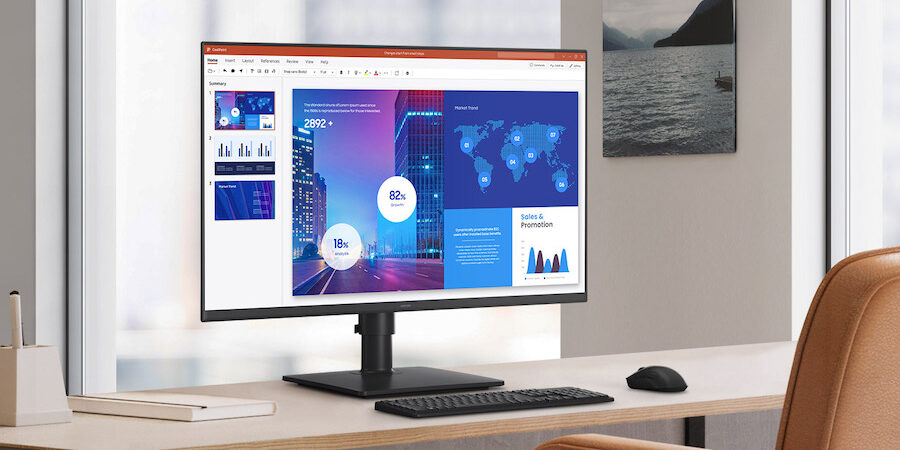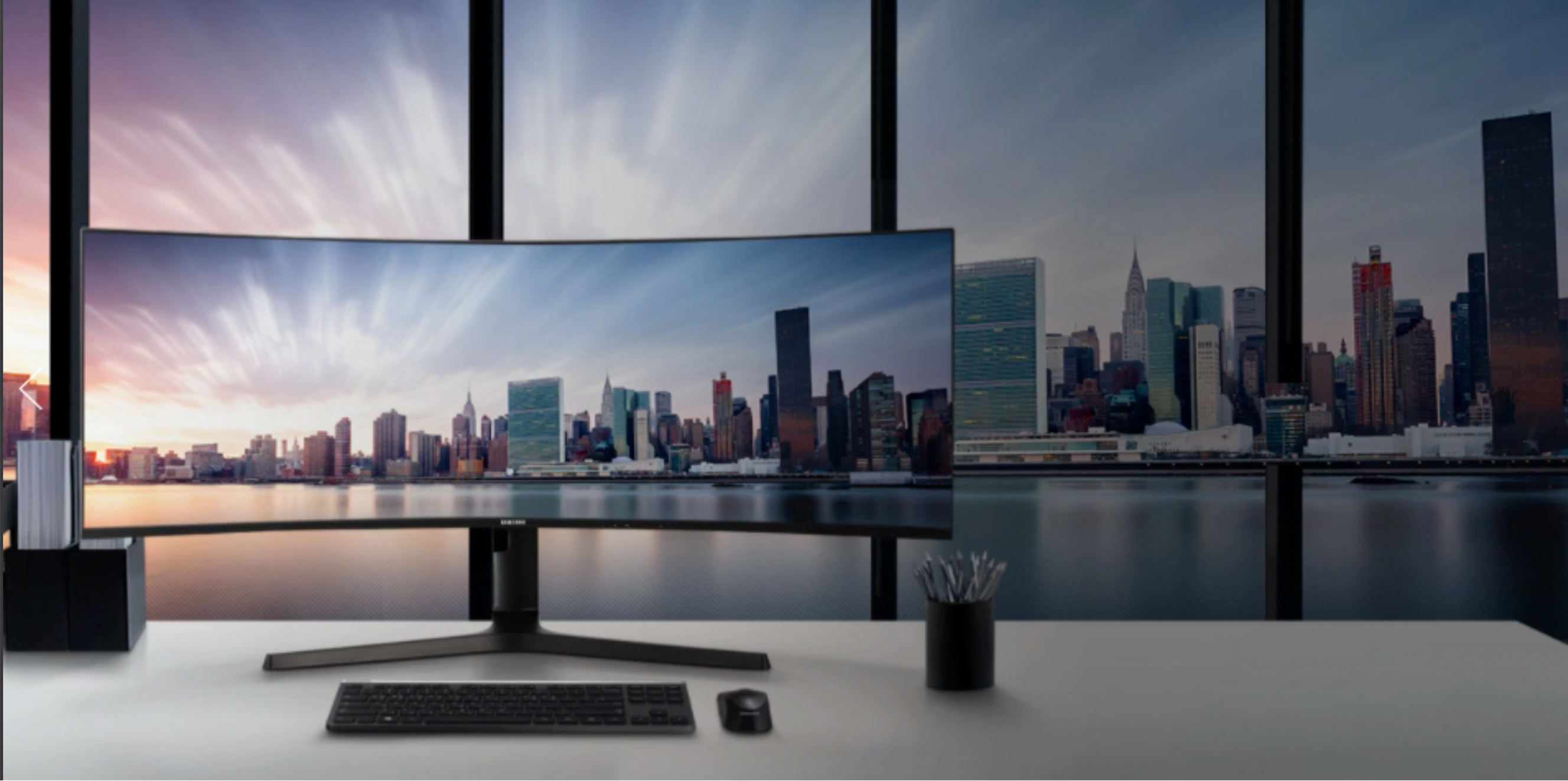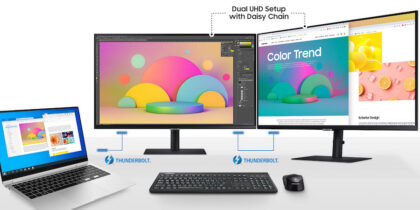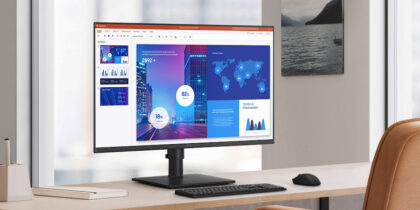When you spend most of your workday looking at a monitor, it’s more than a display; it’s a portal. Like every other technology with practical applications, there are different types of desktop monitors suited for different situations, circumstances and professions.
A key factor in any decision about investing in a new monitor — whether it’s full high definition (FHD), quad high definition (QHD) or ultra high definition (UHD) — is screen resolution, or the number of pixels. Generally, the higher the count, the sharper the image. But that doesn’t always mean it’s better, as even a low-resolution monitor fits many use cases just fine.
Which is the best choice for you? Read on to learn more about the three main types of monitors.
What is an FHD monitor?
At the lower end of the range are FHD monitors, which have 1920 x 1080 resolution, often called 1080p. This is the HDTV standard and doubles the pixel count of standard HD for a total of 2,073,600. An FHD screen’s aspect ratio — or the ratio of screen width to screen height — is 16:9, the classic widescreen aspect ratio of most home TVs.
Upgrade your monitor fleet
Calculate the total cost of ownership of upgrading your business's monitors with five easy questions. Download Now
The best FHD monitors, such as the Samsung S40GD Borderless Business Monitor, can achieve quite a lot on that playing field. This is thanks to many features, including an in-plane switching (IPS) panel for vibrant color reproduction, ultra-thin bezel border and various ports and hubs to connect multiple devices. Employees’ necks benefit from the adjustable height and angle, as do the eyes thanks to Eye Saver Mode and flicker-free technology.
What is a QHD monitor?
QHD kicks the resolution up several notches to 2560 x 1440, for a total of 3,686,400 pixels — about 1.8 times the pixels of an FHD monitor. Images displayed on a QHD monitor will be sharper, better defined and more detailed, while still in the familiar 16:9 aspect ratio. That’s important for people working on image-heavy tasks, such as graphic design, video editing and gaming.
Samsung’s 32-inch ViewFinity S6 (S60D) QHD is a great example of the difference. It displays content in 1.07 billion colors at the HDR10 standard and has a 100Hz refresh rate. It also has a built-in KVM switch that enables unified control of two monitor sources. The height-adjustable screen that swivels and tilts up to 90 degrees makes viewing more comfortable.
What is a UHD monitor?
At the top of the monitor food chain are UHD monitors, with 3840 x 2160 resolution and 8,294,400 pixels total — four times the number of FHD panels. That means they bring a premium level of detail and sharpness unmatched by most others and still in a 16:9 aspect ratio. In fact, UHD monitors are commonly known as 4K monitors because 3840p resolution rounds up to 4000p. That’s the image power you need at the top of graphic and gaming design, media editing and financial tracking.
One monitor that fits this bill is Samsung’s ViewFinity S80PB. In addition to all the bells and whistles of Samsung QHD monitors, it offers DisplayPort, HDMI, and USB-C connectivity, along with flicker-free technology, blue light reduction, and vibrant, true-to-life colors for an enhanced viewing experience.Picture-by-picture and picture-in-picture options let you customize the optimal layout, too.
Which monitor is best for you?
When choosing an FHD, QHD or UHD display, you should determine your technology needs, especially for graphics and media. FHD monitors can easily handle most simple and everyday jobs, but the more complex and diverse these tasks become, the more desirable a higher resolution is.
Bear in mind that the advantages of a higher-resolution screen extend beyond the obvious gains in clarity, sharpness and detail. The higher the pixel count, the closer you can sit to the screen without suffering image degradation or eye strain. This is particularly useful for people who need to get close to the information on screen — and for long periods — like designers, creatives or stock traders.
Connectivity is another factor to consider. How many devices should the monitors connect to, and do they have the necessary inputs and outputs? Daisy chaining can also help manage multiple streams of information, data and imagery.
Increasing the size of the monitor may also help meet needs. For example, Samsung’s ViewFinity S95UC, offers a 49-inch display in a 32:9 aspect ratio. This allows for multiple screen-in-screen options, and the monitor’s curved edges put them more in your natural field of view, enhancing the immersive experience. VESA DisplayHDR 400 technology adds more sparkle by creating a high dynamic range of blacks and whites, so each image pops with intensity. Built-in speakers also keep the area around the adjustable stand free of clutter.
Flexibility as a feature
When it comes to choosing the right monitor solution for the job, flexibility is a virtue. The more flexibility there is, the better systems can fit the exact needs of businesses and employees. This is why Samsung offers a wide range of solutions at any scale. From basic operations to high-level design and planning, there’s a Samsung monitor that makes life easier.
Learn more about how to turn desktop monitors into production hubs with this free guide. Also discover how to improve productivity of your digital workstation by daisy chaining multiple monitors.








